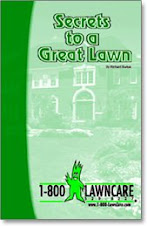
Summer's here and its hot, Texans are used to this weather, right? Not necessarily. Over the last three years we have broken records each of those three years, the most recent being the hottest, driest months on record. Yes, I suppose in this region North Texan's are more apt to handle hot weather than say our northern neighbors, yet as we look at temperatures for the last century, we find we have been hotter consistently and below average rainfall.
So if temperatures are high as usual without any rainfall, drought conditions magnify turf problems, without water your investment is wasted. Bermuda for example does have some drought tolerances, consequently, just like the any living plant, Bermuda needs a certain amount of water to stay healthy.
The University of Texas A&M experts in regional turf grasses, have some surprising prescriptions for regional turf grass irrigation recommendations, a suggestion far less than one would expect. 1 to 1.5 inches per week, with longer periods of slow watering the better.
The pro's who study turf grass management have done their field work, analyzed the data, to formulate suggested weekly watering tables for regional turf grasses, both Bermuda and St. Augustine require only one to two inches weekly to be healthy. Which is a surprisingly low amount, given the time it takes to apply.
With this prescription a homeowner can breathe a sigh of relief in times of drought and forced water restrictions. Your irrigation system should be in proper working order, insuring the heads are functioning properly, however, only needing one to two inches weekly should be an easy chore, assuming your system is working as intended.
In this time of what seems to be a pattern of drought we're stuck in, take the time to have your system audited, fixed and maintained. Follow the weekly rule of one to two inches per week and your investment should be fine. Rain will eventually fall again, but until it does, you can be comforted in knowing under restrictions you can still have a beautiful lawn.
Check out Lawn Tech's answer to watering restrictions, a product called "Moisture Manager" a unique bio-degradable substance which helps maximize your yards water consumption. Visit our website at: www.lawntech.com to read more or call us at 972-346-2696 for more information.







